How To Connect Speaker Wire To Wall Plate
How to hibernate the wires for your speakers and TVs
In-wall wiring guide for home A/Five
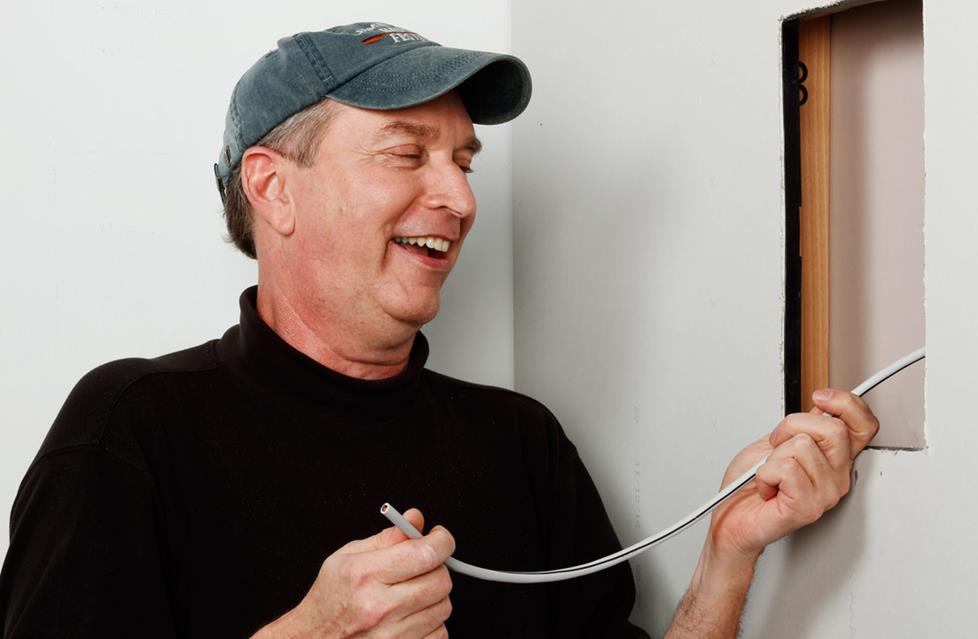
Crutchfield advisor Norm has worked on hundreds of whole-firm wiring jobs.
This guide will help you relieve money past doing your own minor-calibration in-wall wiring projects in both finished and unfinished rooms. If you decide to hire a professional person, the knowledge you gain will help you lot work through the procedure with your contractor.
Can you exercise the in-wall wiring yourself?
Is it legal?
In near locales, a homeowner is allowed to install low-voltage wiring. Notwithstanding, each state has its own code, as do some cities and counties, so check with your local government to be sure.
Are yous capable?
If y'all're new to this sort of work, wait to tackle a relatively small-scale project, similar hiding the wires going to the rear speakers in your home theater.
The easiest scenarios for a practice-it-yourself installer are those in which you lot can run wires in the attic, unfinished basement, or crawlspace. Apply these spaces equally much as possible, even if it means longer runs of wire.
Consider wireless options first?
Before you beginning drilling holes in studs or cutting holes in your walls, consider today'southward wireless music solutions. In that location are a variety of wireless speakers, besides as some receiver/transmitter combos that work with regular amps and speakers. A lot of people ask us about wireless surround audio systems. For years there was no good respond. At present there are several.
Request a system design
Earlier you brainstorm, you'll need a programme. Do yourself a favor and submit a organization design request to Crutchfield's A/V Design team. You can upload a floor programme and pictures of your room and so chat with a designer about your goals. You'll receive a organization plan and a link to a shopping cart filled with all the items you need to complete your project.
Things you'll need
Ever apply wire that'due south rated for in-wall installation. Wait for speaker wire with a CL2 or CL3 rating. Wire rated CL2P or CL3P is for placement in a plenum-rated airspace in a higher place a drop ceiling in a commercial building. Y'all'll want cable rated for direct burial if you're running it through the ground to outdoor speakers.
Speaker wire gauge and conductors
In-wall speaker wire is identified in shorthand that indicates its estimate (thickness) and its number of strands (or conductors, as they're known in the trade):
- 16/two is 16-estimate wire with 2 conductors
- fourteen/4 is 14-judge wire with 4 conductors
The lower the gauge number, the thicker the wire. For runs of less than 50 anxiety, 16-gauge wire will suffice. For longer runs, apply thicker 14 approximate wire.
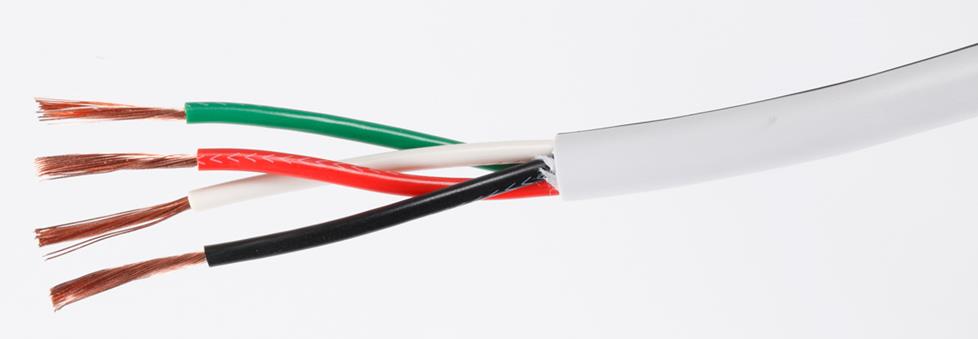
Why pull two wires when you can pull i instead? Iv-conductor wire has positive and negative wires for both left and right speakers inside a unmarried jacket. It'south oftentimes used between an amplifier and an in-wall book command or a stereo-input speaker.
How much wire should you lot buy?
After planning where yous're going to route your wire, you'll need to figure out how much you'll need. Ask your arrangement designer for help with this. He or she can provide you with a wiring "map" — a plot that shows what you're installing in each room, including all of the speakers, cables, brackets, and other items you'll be installing.
Your designer can await at your floor plan and give you a solid recommendation of how much wire to purchase. If you're mapping out your own program, think through where each wire volition have to become. Step off or measure each pathway. Tips:
- Allow extra wire for the connections. For case, if yous intend to install ceiling speakers by yourself, allow ii-3 feet of extra wire so you tin set the speakers on your ladder while you claw them up.
- Allow 10 to fifteen percent extra: Your planned wire road might be thrown off by an unexpected obstacle. To exist prophylactic, buy at to the lowest degree x percent more than wire than you call up you demand.
Audio/video cables
Virtually sound and video patch cables are not suitable for in-wall installation. Some HDMI cables that are rated for in-wall use don't support 4K or HDR video.
Fortunately at that place are some clever solutions, such as baluns, that use in-wall-rated network cable, coax cable (RG-6), or even cobweb optic cablevision to laissez passer audio and video signals over long distances.
Wall plates and brackets
Your system designer tin can also assist yous determine how many and what kind of wall-mounted receptacles and in-wall volume controls y'all'll need. You'll likewise need mounting brackets to support the receptacles and volume controls. Your designer can add together all of these parts to your organisation programme and a pre-filled shopping cart.
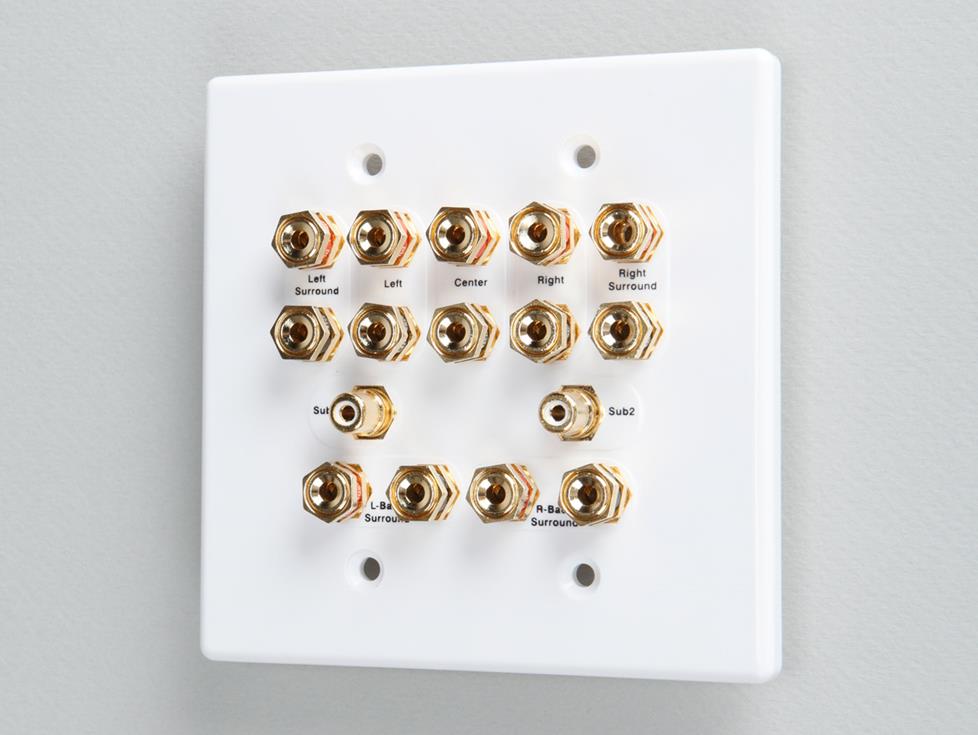
This receptacle accommodates the speaker and subwoofer connections for a surround sound organisation.
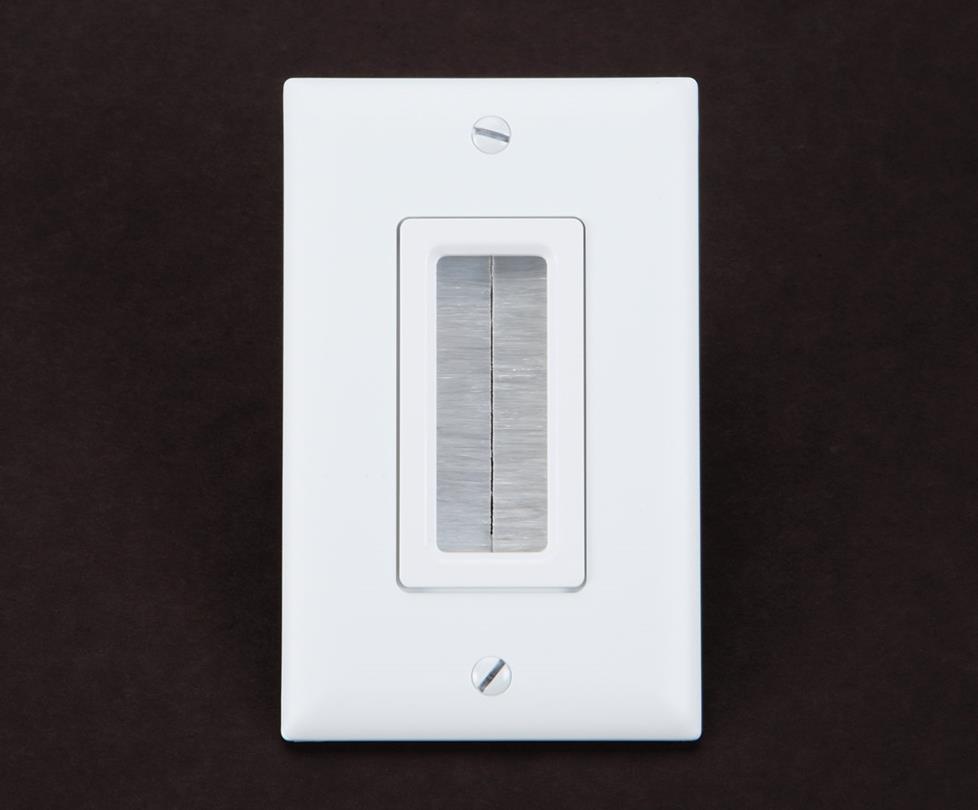
This universal wall plate gives you lot an entry or leave point for any kind of in-wall wire.
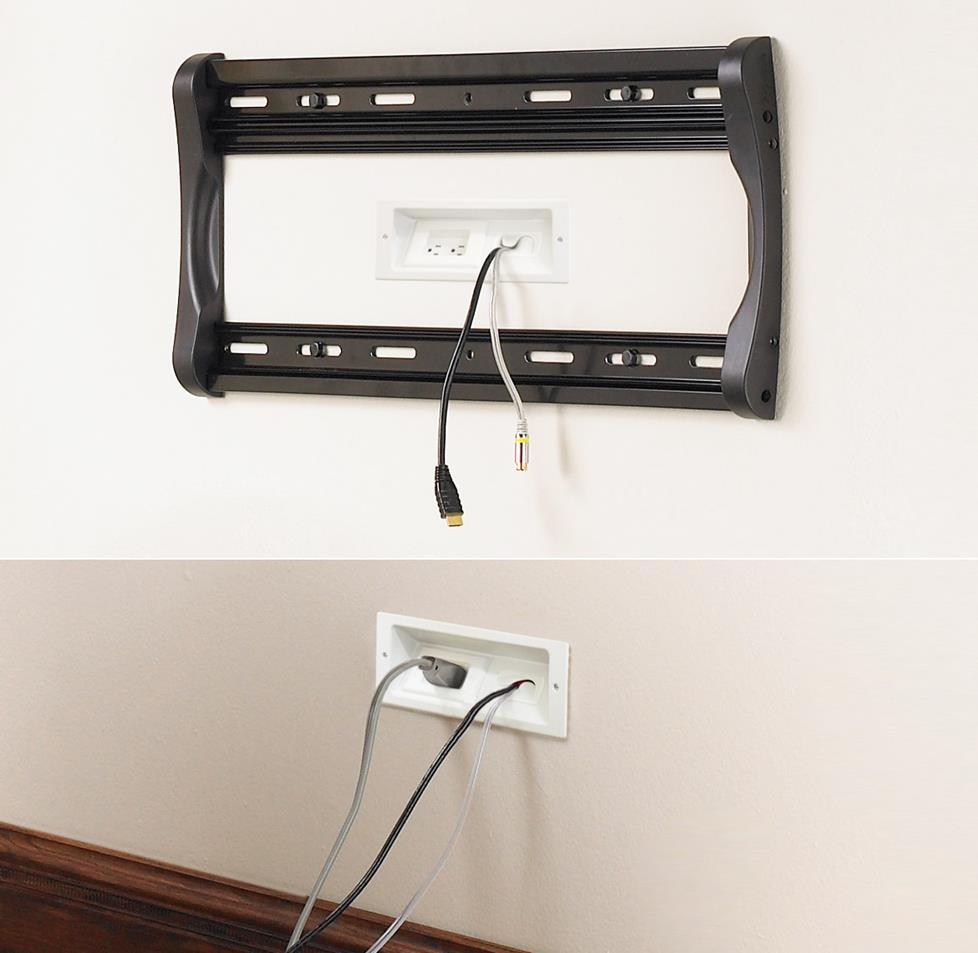
These plates are role of a kit that hides both signal and power connections for a wall-mounted TV.
"Rough-in" or "hole-saving" brackets
These brackets for in-wall and in-ceiling speakers save a lot of fourth dimension. The drywall installer will cutting holes for the brackets before hanging the drywall (equally they exercise for light switches and electrical sockets). You may accept to social club these separately — they may not be included with your speakers.

"Hole-saving" or "rough-in" brackets brand it easy to install ceiling and in-wall speakers after the drywall is installed.
Outlet boxes
The hardware used to mount book controls, wire outlets, and other in-wall devices are chosen junction boxes or "J-boxes." Look for a J-box that's deep enough to fit your in-wall devices (usually 2-iii/iv").

Backless brackets provide the minimum back up you'll need to attach a wall plate. The one at left is for a finished wall. It clamps itself to the hole you cut for it. The i at correct gets nailed to a stud before your drywall goes upwards.
For a wall-mounted book control, you lot need the structural strength and protection afforded by a standard junction box (bachelor at home comeback stores). When you're simply terminating wires at a wall plate, backless brackets will do.
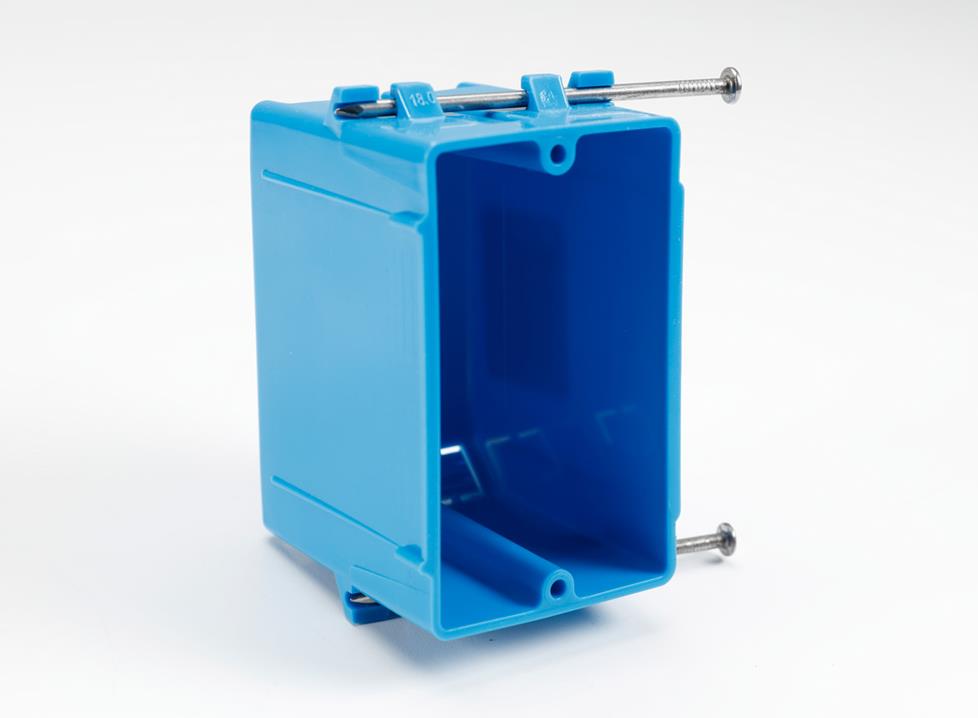
A standard junction box protects your in-wall volume controls.
Mount your outlets at the same height as Air-conditioning outlets for a make clean, uniform look. In-wall controls look all-time if you match the height of your calorie-free switches (usually located 44-48" off the floor). Don't attach low-voltage boxes to light switch boxes.
Smash plates
Whenever y'all drill a hole 1-1/iv" or less from the surface of any wooden part of your house (a stud, joist, plate, block, or brace), or notch any wooden office, y'all must protect the cable with a nail plate. The blast plate prevents a blast from always piercing the cablevision.

Nail plates protect your wires from nails, screws, and drill bits.
Wire labels
Characterization both ends of the wire before yous outset pulling, or before cut another wire. You can use Crutchfield CableLabels™, or but use masking tape and a marking.
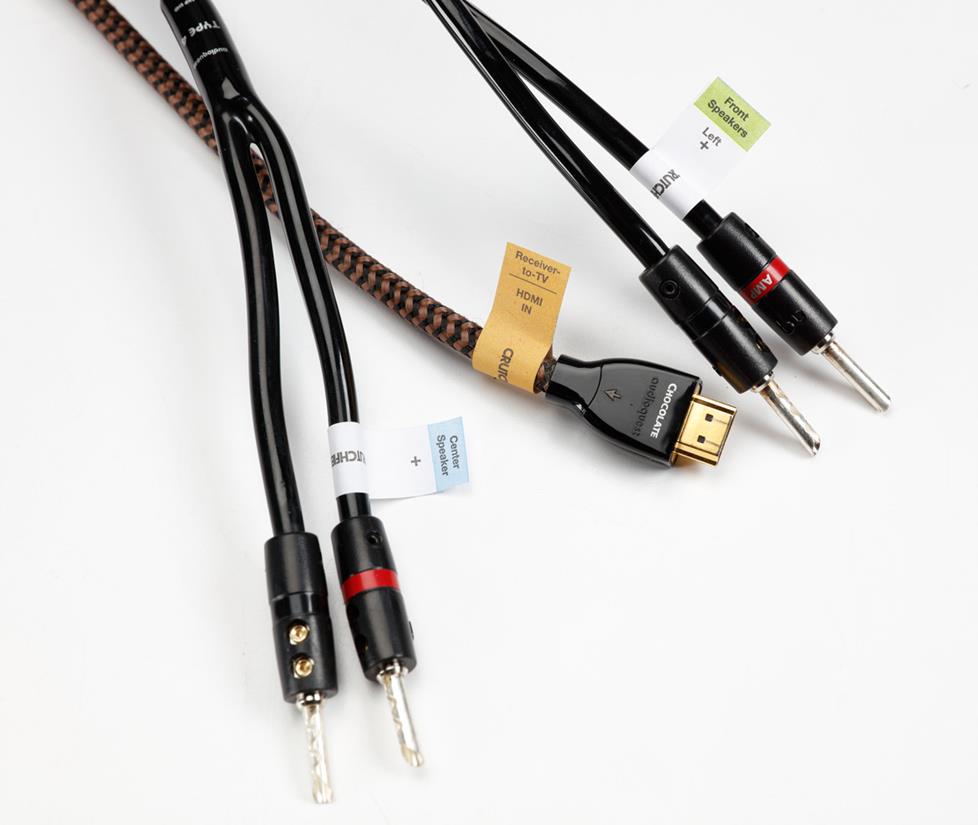
Crutchfield'due south self-agglutinative, colour-coded labels go on your sound, video, and speaker cables clearly marked.
Wire ties and attachments
Wire must be supported every 4-1/2 anxiety and within 1 foot of a junction box. Use wire ties and wire-tie clamps. The staples electricians use for regular Air conditioning wiring may damage depression-voltage cables if they're nailed down likewise tightly.

For bundling cables at the dorsum of a component, a reusable wire wrap comes in handy.
Component racks
If yous're going to hide your speakers in your ceilings or walls, why not hibernate the components, too? We offer a variety of equipment racks designed for installation in a utility room or closet.
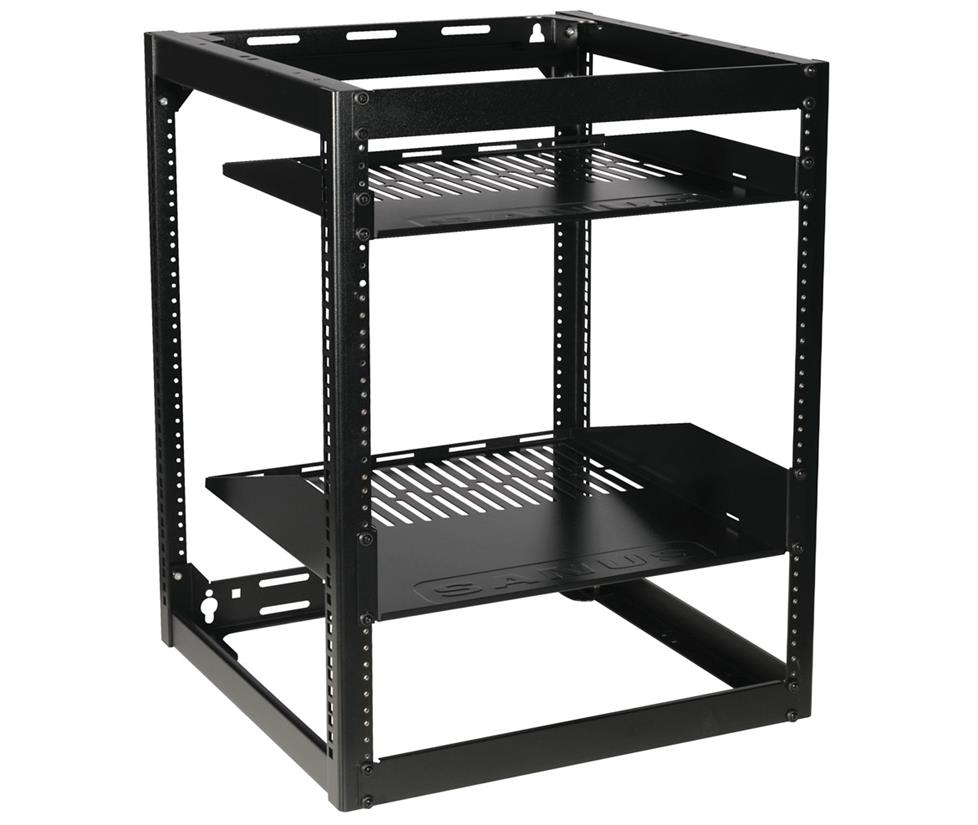
Sanus CFR-series open racks can be wall- or floor-mounted.
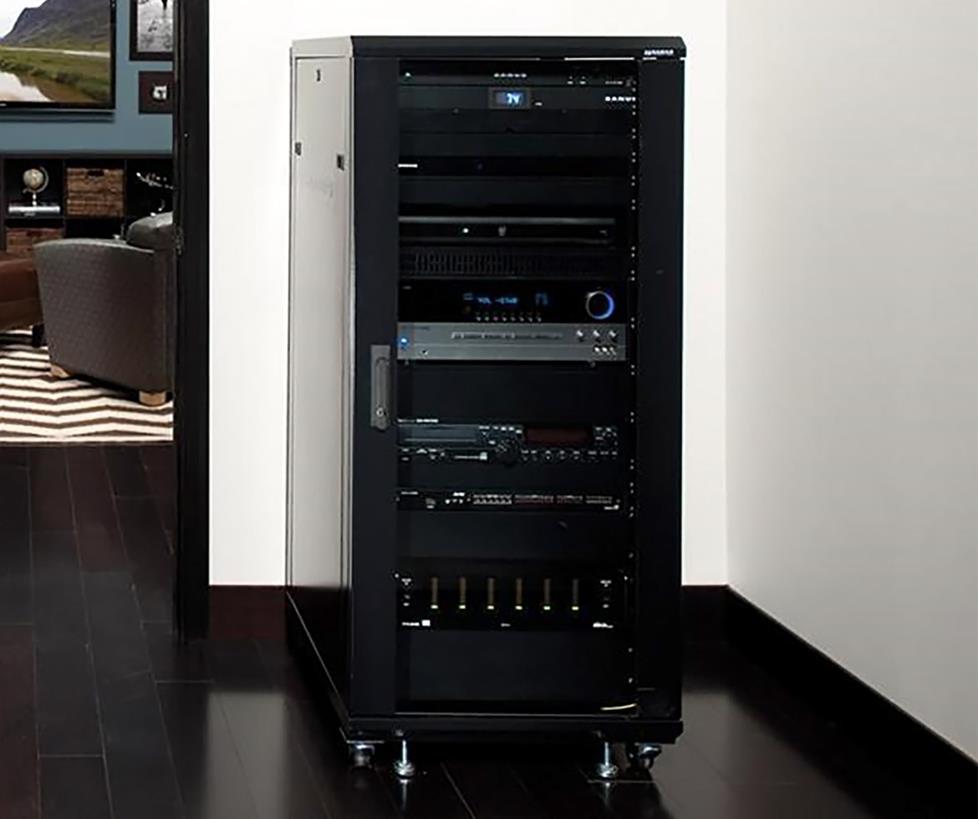
A airtight racks usually include casters, so you can curl it out for piece of cake access to your connections.
Tools
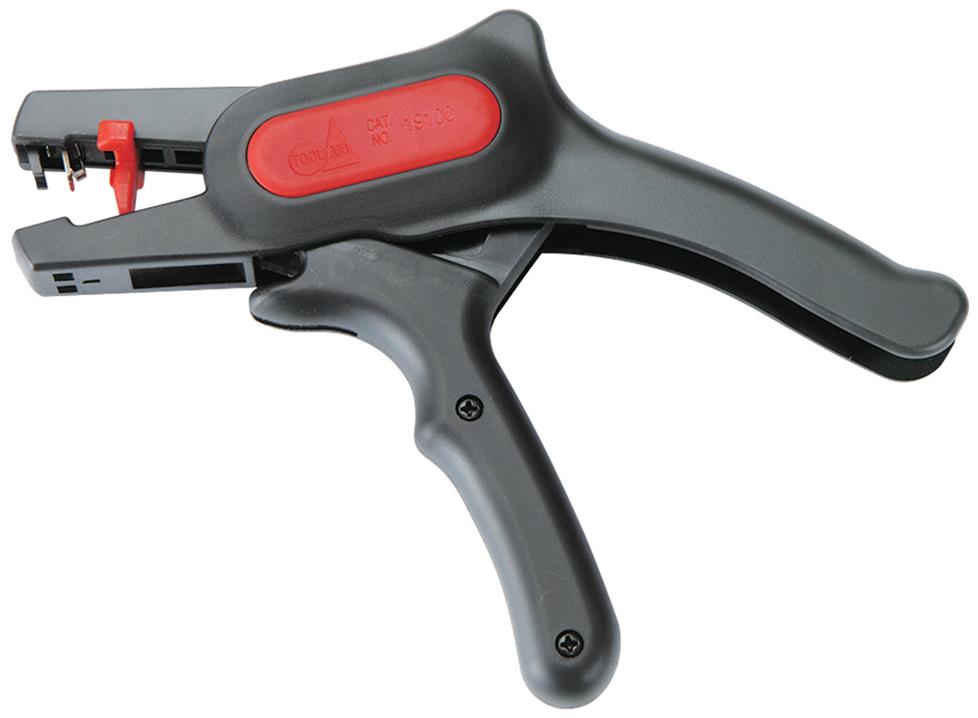
This tool strips 12- to 22-gauge wire with one pull of the trigger. You tin adapt it to strip off the verbal amount of insulation you want.
Wire cutter/strippers
A adept wire stripper is a must if you lot're installing a lot of speakers. Nosotros also offer a diverseness of tools for attaching connectors to coax and network cable.
An culling wiring stripping method requires nothing more than a razor pocketknife. Hither'due south how Crutchfield's Norm Hawes, an experienced installer, does it:
Studfinder
You'll want to invest in a skillful studfinder before you begin an installation in a finished room. Some studfinders, like this 1, can differentiate between metallic pipes, Ac wires, and other obstacles subconscious behind your walls. Here's a link to some nifty video tips about how to use a studfinder.
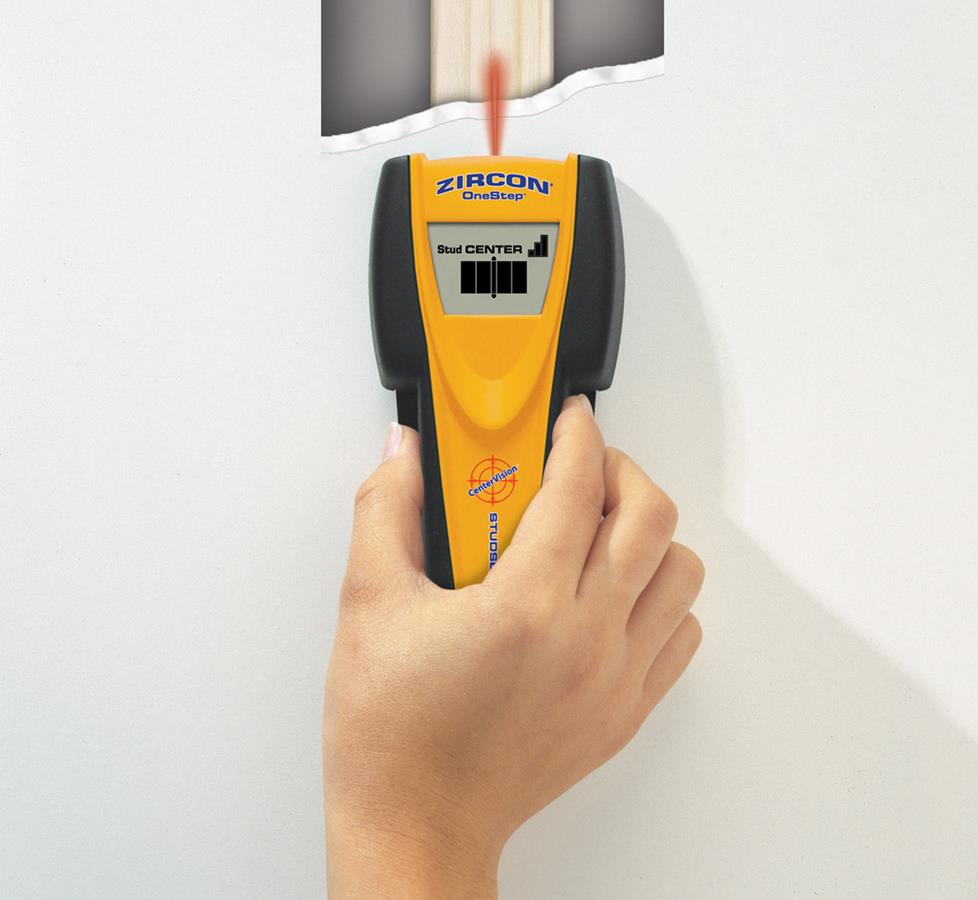
Slide a studfinder forth a wall or ceiling to locate studs or joists. (Photo courtesy of Zircon Corp.)
Fish record or fish sticks
A fish tape is a tool that helps you pull cablevision behind finished walls, floors, and ceilings. Think of it as a fishing reel spooled with semi-rigid "tape." The idea is to push or "fish" the record from one finish of the wire pathway through to the other cease. Then you attach the wire to the hook at the end of the tape and pull information technology back through.
Norm likes to use fish sticks:
Miscellaneous tools
- Light amplification by stimulated emission of radiation level or chalk line
- 1/2" or larger electrical drill. You may want to buy or hire a right-angle drill if you're doing a lot of work in unfinished rooms.
- A prepare of spade bits from 1/4" to 1-ane/2". (Professional installers use costlier auger and pigsty-saw bits because they make the chore easier.)
- Drywall saw
- Footstep ladder
- Eye protection, piece of work gloves, and grit masks
- Electrical tape
Run into how an expert runs wire
In this video, Norm shows you how to run wire and "trim" it for a safe and tidy installation.
Installation tips and techniques

An unfinished room that has been prewired for home theater and is set for drywall installation.
New construction
Be careful not to bite off more piece of work than yous tin chew. Most do-information technology-yourselfers don't have the tools, skills, or time to wire an entire new home as it'southward being built. But say you have an unfinished room you're converting into a habitation theater. That'southward a project you can have fun with. Hither are some guidelines:
Never use the same holes for both AC wire and low-voltage wire. Try to avoid installing your wires beside Air-conditioning power lines for more than five feet. As much as possible, keep them 1 foot abroad from the power lines throughout their runs.
You tin can safely run sound and video in the same bundle as security, phone, data, and other low-voltage wire.
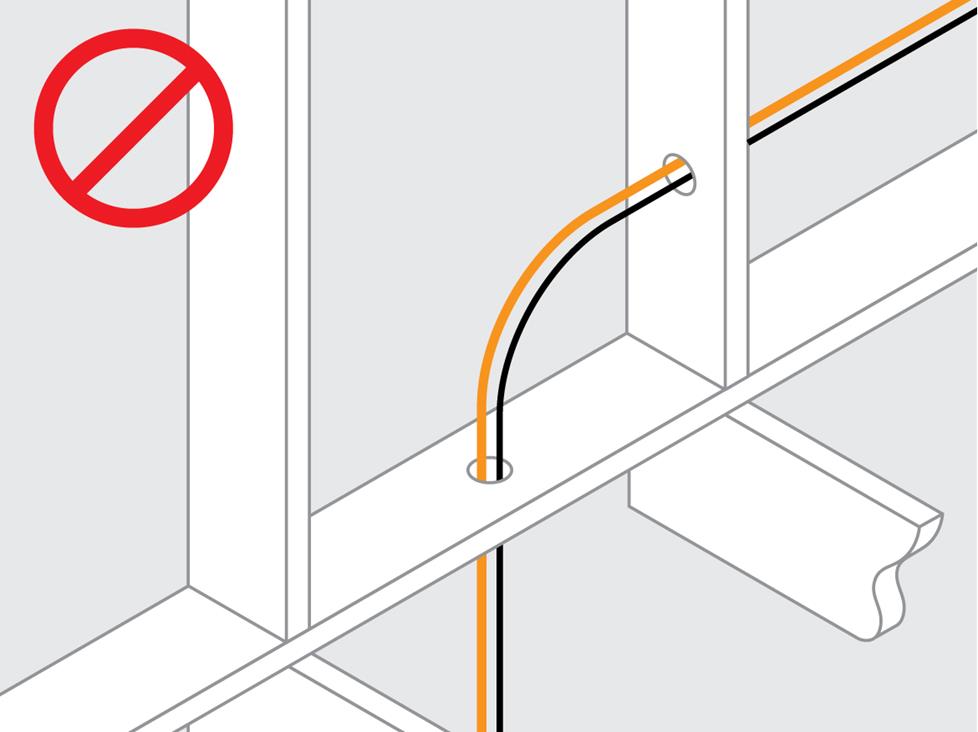
Running depression-voltage cables (black) with AC power cablevision (orange) may outcome in poor performance or wire damage.
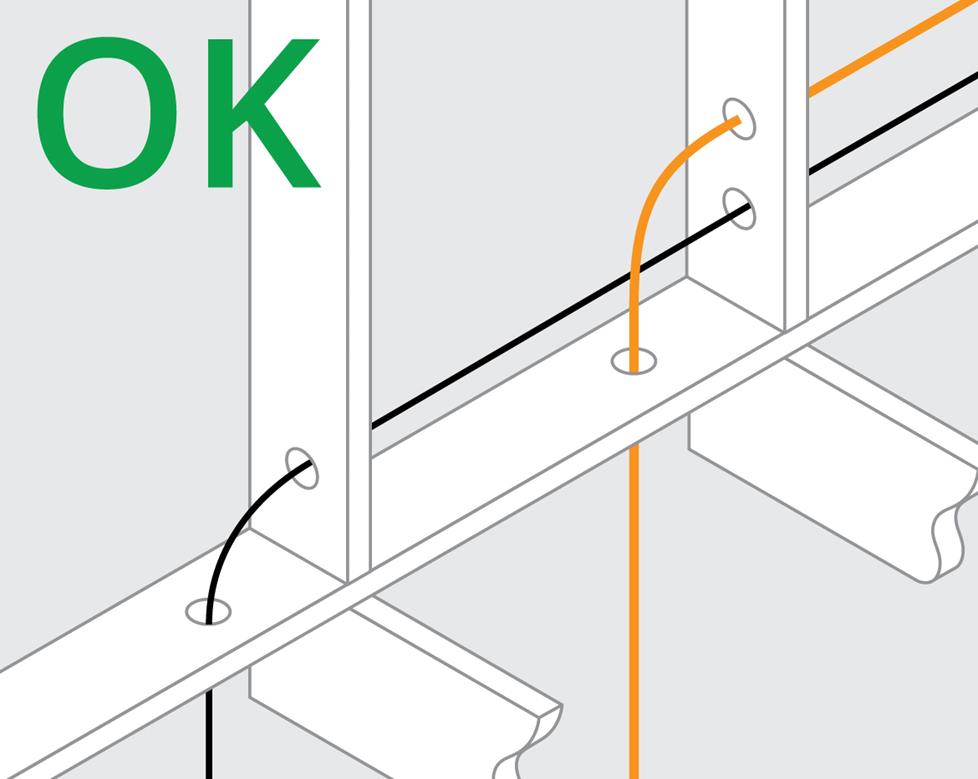
If cables and power cable run parallel, go along them a minimum of 12" apart. If they intersect, keep them at 90-degree angles.
Rules for drilling holes into studs and joists
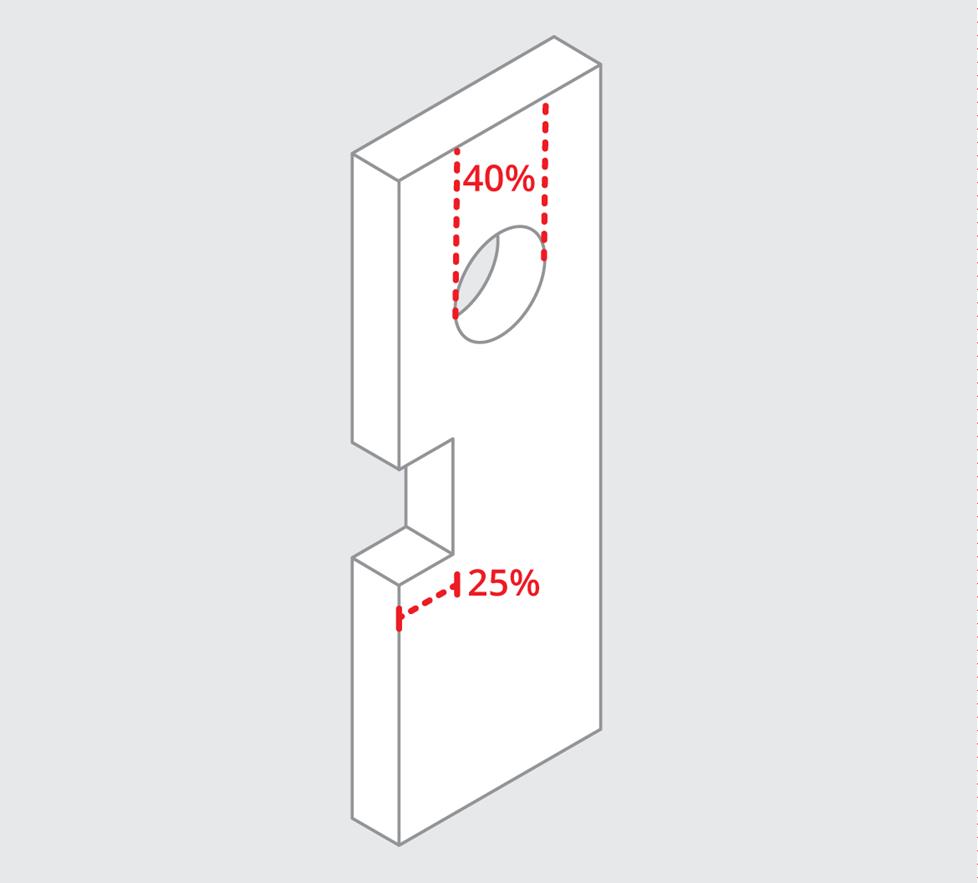
Hole diameter shouldn't exceed forty% and notches shouldn't exceed 25%.
Drill your holes in the center of each stud. The bore of the holes shouldn't exceed xl% of the stud'due south width. A standard 2" x 4" stud is actually about 3.v" wide, which means your holes tin't exist more than 1-3/8" in diameter.
Continue all holes centered vertically in the joist. Don't drill within 2" of the top or bottom of the joist. The farthermost ends and the middle third of the span of the joist carry the load, and so avoid making holes there if possible.
Y'all are express to a hole that is a third of the measured depth of the joist. A 2" 10 6" joist actually measures v-ane/two" deep, so you lot can drill a 1-3/4" hole. Y'all tin can drill multiple holes rather than i very large hole when many wires need to go 1 fashion.
You cannot make any holes in laminated support beams (gum lams) or headers (the supports over doors, windows, or arches).
Tips for pulling wires
For your wires to pull easily, the diameter of a pigsty should be nigh twice equally large equally the total diameter of all the wires you program to pull through it. Since hole sizes are limited, you lot may have to use multiple holes. For example, a ane-three/eight" hole volition adapt parcel of cables slightly less than iii/4" in diameter.
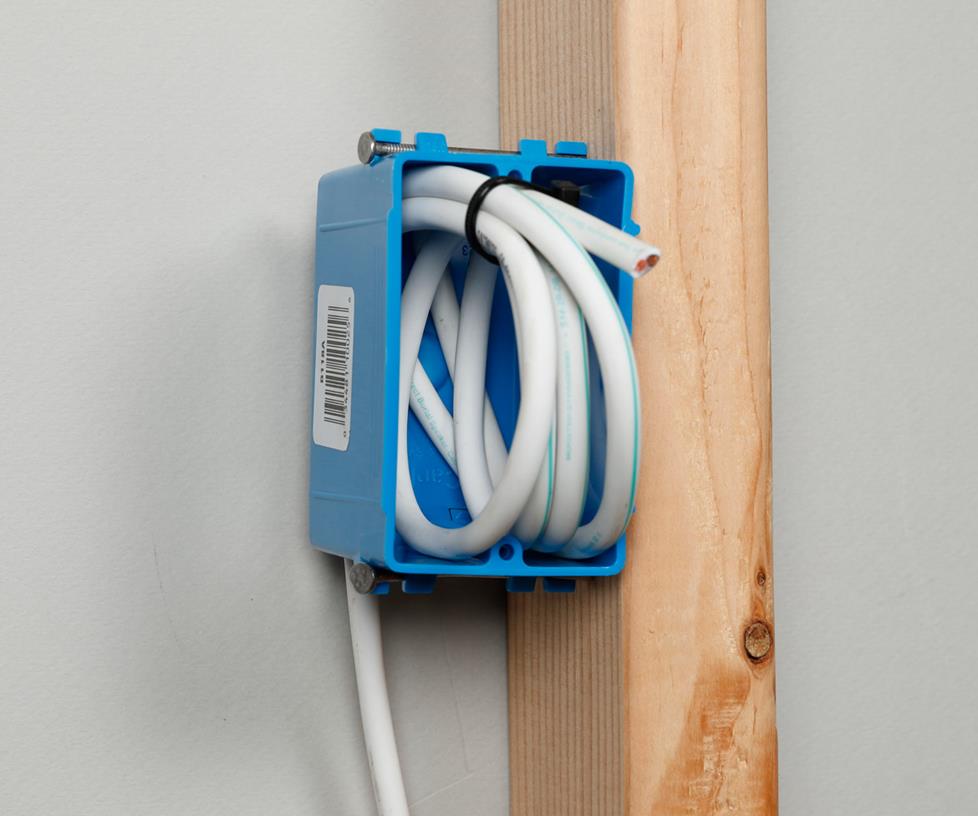
Dress at to the lowest degree 2 feet of speaker wire in a loop at each J-box or P-ring location, securing information technology with wire ties.
Dressing wires
Once a wire or package of wires has been pulled to its outlet location, you must dress information technology. That means properly preparing it for the last step (making the connections), which won't happen until you're well-nigh set to move in. You'll neatly curl the excess wire and temporarily secure it to the junction box.
- Support the wire within ane human foot of a J-box or P-ring. At each subclass, J-box or P-ring, dress at least 2 feet of wire, leaving information technology looped just within.
- The drywall will cover up your wire, so photograph or measure the location and so that you can find the wire after the drywall is up.
- Wrap the ends of each wire with plastic bags and tape to prevent wet from entering wires. Wire can rot from paint and plaster moisture. Brand sure labels are protected.
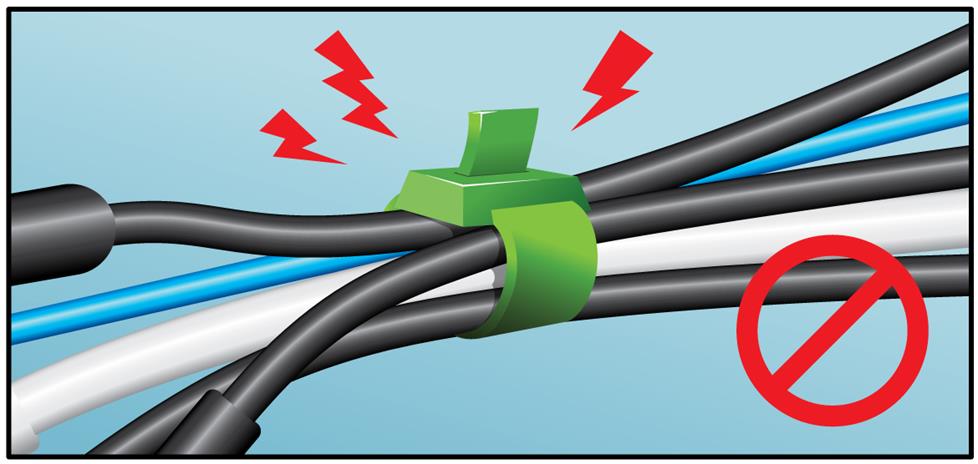
Be careful when using plastic wire ties — they should be snug, but not tight enough to pinch the cable.
Running wire through existing walls
E'er inspect as much as possible earlier making a hole. Explore your crawlspace or ceiling in an unfinished segment of your basement. Try to notice which way joists run and where empty wall infinite betwixt studs might be.
By inspecting from your crawlspace or attic, you tin can identify which wall locations practise not carry water pipes and electrical wires. A high-quality studfinder will help y'all distinguish betwixt different types of obstacles behind your walls, including studs, Air-conditioning cables, and pipes.
Of grade, y'all can't know what's behind the wall with absolute certainty. You must be prepared to cut and patch exploratory holes.
To minimize that work, utilise a studfinder that can locate wood, metal, and live AC wiring. Y'all tin too drill small "pilot holes" to explore behind your walls. Use a sturdy piece of wire, similar a bent glaze hanger, to find nearby obstacles.
Be sure to shut off power in the area where you'll exist drilling your pilot hole, and use caution so you lot don't plunge your chip into a pipe or electrical conduit. Make certain you know where your primary water shut-off valve is located, only in example you do puncture a h2o pipe.
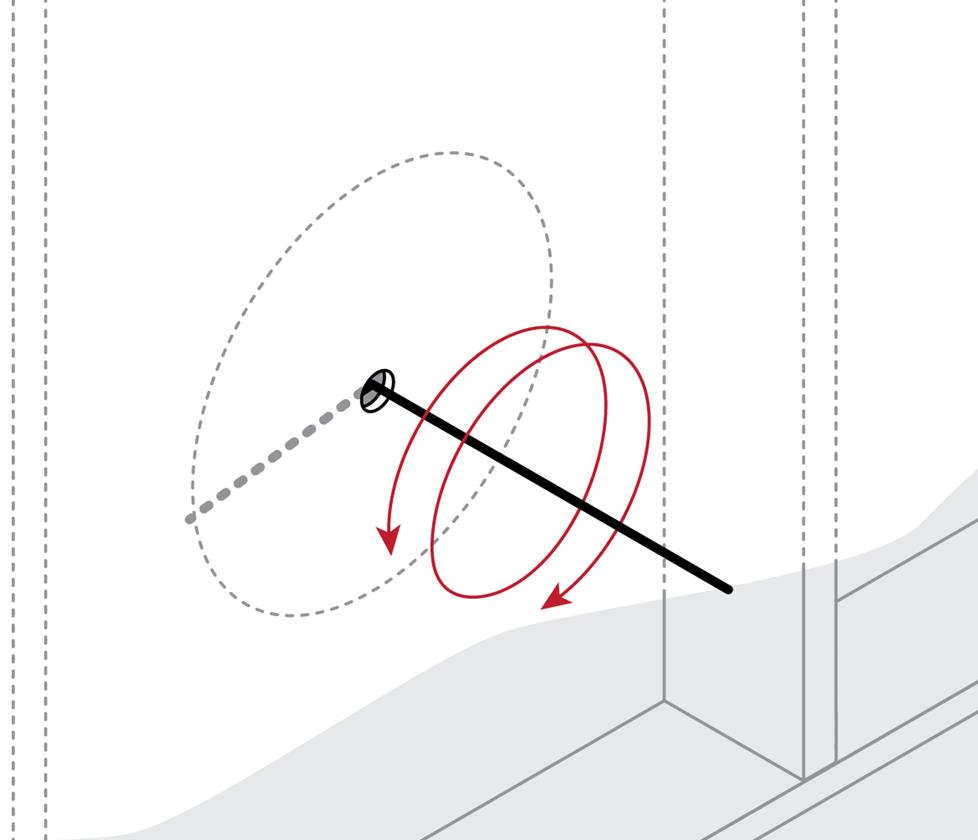
Utilise a sturdy wire (such as a bent coat hanger) to explore your pilot holes.
Cutting drywall
After you've confirmed that all of your component locations will work, traced the templates, and made any other preparations recommended in the owner's manual for your speakers or brackets, you can begin cutting drywall.
If you're creating a rectangular hole, start past drilling two small holes in contrary corners; if it'southward round, drill ii pocket-size holes on opposite sides. Adjacent, using your drywall saw, offset from 1 pigsty, and work around the outline to the next. Cut the drywall in one piece, on an inward slant, so that it's easier to patch later if necessary. If you don't need to patch the hole, just remove whatever excess material before installing the speaker.
For more than information on choosing and confirming locations for your in-wall gear, see our in-wall speaker installation guide.
Plaster and lath walls
If your business firm has plaster and lath walls or ceilings, installing your ain in-wall wiring volition be more complicated. Plaster tends to crack and crumble hands, and then you should be prepared to practise some touch-up piece of work. We recommend running out-of-wall wire, and using carpets, cabinetry, etc. to hibernate it. Run across our article on domicile A/V cablevision management for more ideas.
Wiring tips and tricks
You'll probably encounter some in-wall obstacles while routing your cables, such as additional bracing or a fire cake. If that happens:
- Remove a rectangular piece of drywall around the obstacle. Cut on an inward slant and so that it's easier to patch the drywall when you're done.
- Notch the block or drill a pocket-sized hole for your wire. If you notch the block, don't forget to cover information technology with a nail plate.
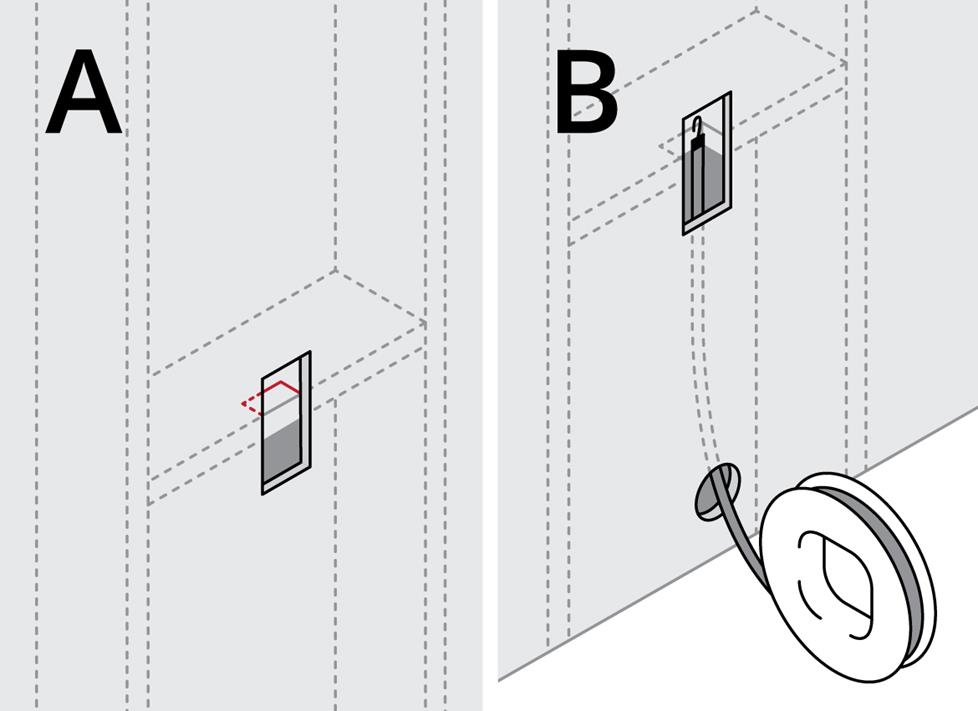
To route wire through a hidden obstruction: (A) Cutting a rectangular piece of drywall around the obstacle. (B) Notch the cake or drill a hole for the cables. Apply your fish tape to route the wire through the hole.
Routing wire through an unfinished basement
In the case shown here, you cut 2 holes in the wall – one for a wall plate and another for an in-wall speaker. Next, drill two holes in your wall's bottom plate, which is accessible from the unfinished basement ceiling. Ane hole goes below the wall plate and the other goes below the in-wall speaker.
How do you know where to drill the bottom plate holes? You can either measure the distance to the wall plate and speaker from an adjoining wall, referencing a copy of your blueprints, or measure the distance from a visible landmark that runs straight through the wall to the floor below, such as a plumbing piping.
Once the holes are done you tin fish the wire from the wall plate pigsty through to the basement, then up through the other hole to the speaker location.
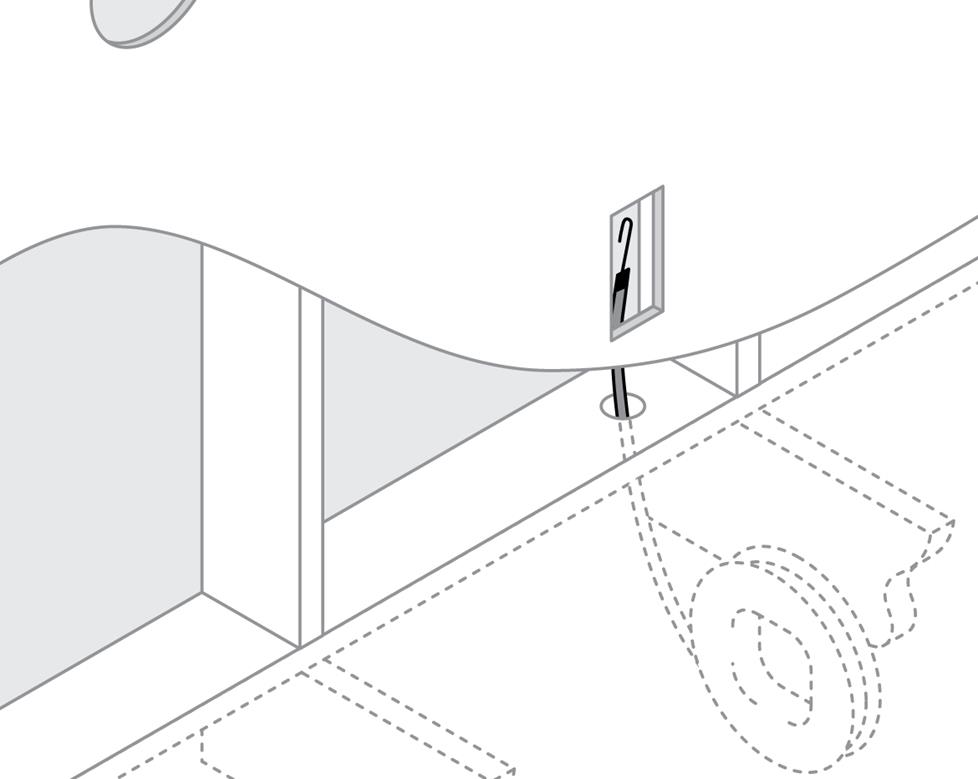
Here's how you run wire through an unfinished basement.
Routing wire along a baseboard
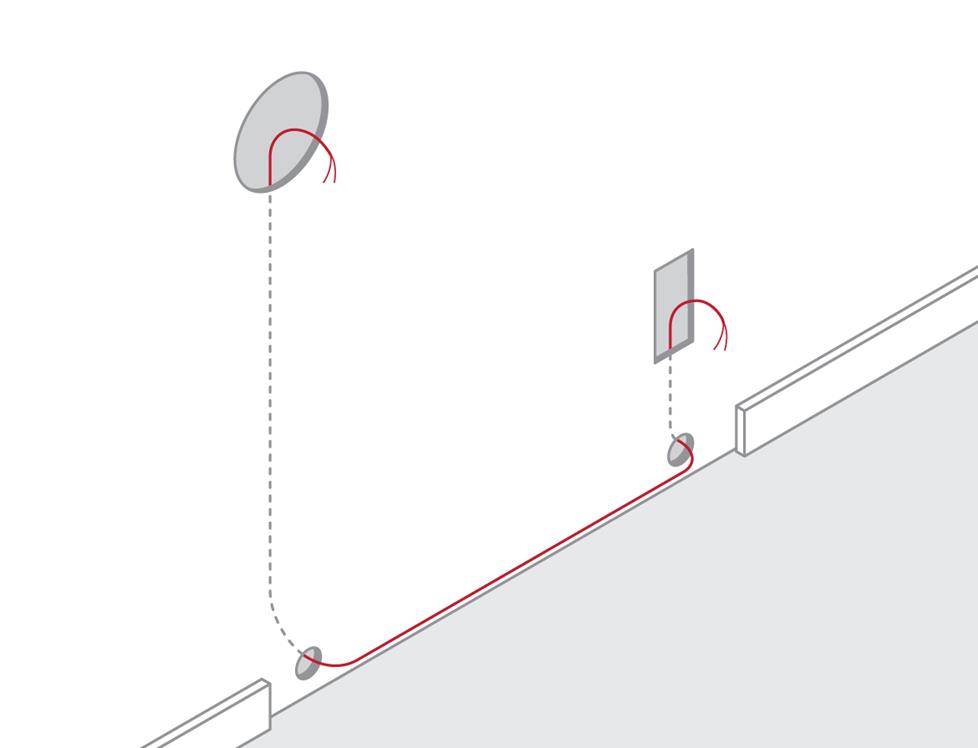
If yous don't accept an unfinished basement to run wires through, you can hide wires behind your baseboard.
Pry off the baseboard with a minor crowbar. Remove a thin strip of the drywall to expose the studs. Cutting a wire aqueduct past scoring and chiseling the studs. Fish your record from one pigsty to the other and pull the wire through. Tuck the wire into the channel and install nail plates at each stud. Re-install the baseboard.
Routing wire around a door frame
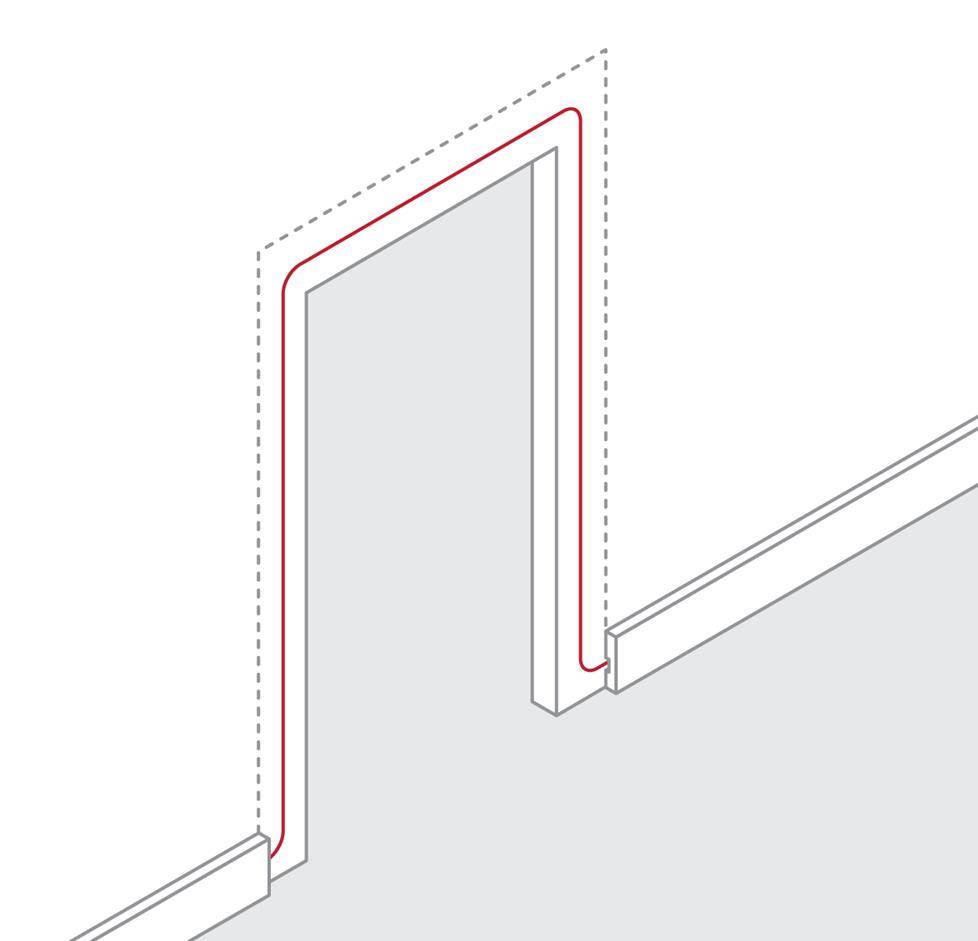
If you're using your baseboard to muffle a wire pathway, you may have to deal with the door trim, also.
Pry the molding away from the doorway using a chisel, small crowbar, or putty knife. Run the wire betwixt the frame and the jamb. Chisel out channels for the wire in the frame, if necessary. Reattach the molding.
How to attach a wire to a fish tape
In order to pull wire from one location to another, y'all'll need to adhere the wire to the fish tape, as shown here:
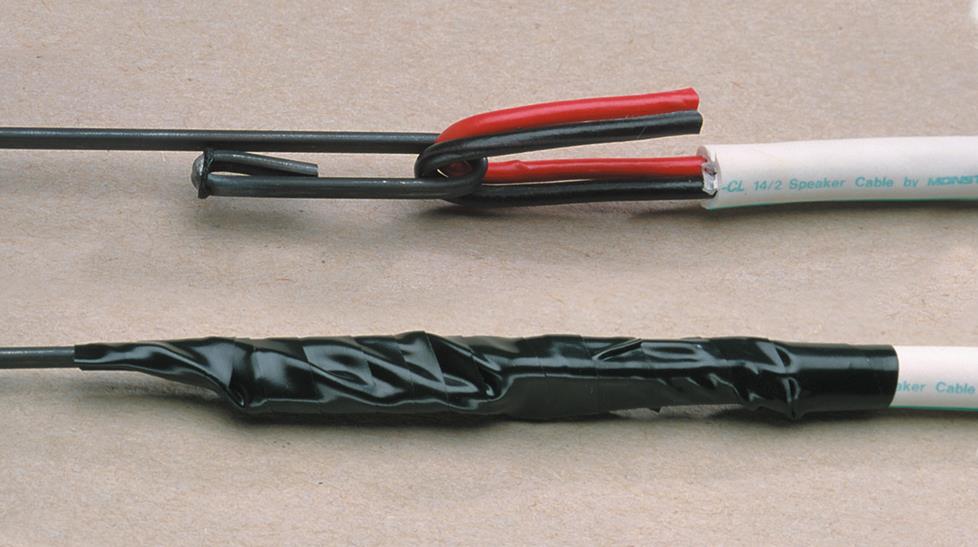
(A) Strip the jacket off the cable. Curve the conductors over the fish claw. (B) Wrap the hook and the cable with electrical record.
Tip: how to fish wire through insulation
Insulation is about normally plant on outside walls, merely you might encounter it when fishing wire through interior walls too. The cardinal here is not to fish the wire through the insulation, but effectually it.
Many types of insulation will have a newspaper or plastic covering. Try to fish your wire between that covering and the drywall. Alternatively, fish the wire along a stud, using the stud every bit your guide. In this case, if you have fish tape that'south wound on a spool, keep the tape curved in towards the surface of the stud, so that it's less likely to devious into the insulation.
Yous can also check your local hardware store for unlike kinds of fish tape designed to be more effective with difficult runs like these.
Drywall repair and clean-up
If you cut any holes that didn't work out, you'll need to patch them. Watch this video to run into how information technology'southward done.
To learn some more than installation techniques, run across our outdoor speaker installation tips.
Get a free arrangement design
In a well-designed home, course and function are on the same team. Furnishings and appliances smoothly serve your family unit and guests. Yous should await no less from your audio/video gear. But outset you need a plan, and that's where your Crutchfield A/V design specialist comes in. Submit a system pattern request today! Yous'll receive a detailed organisation programme and a link to a pre-filled shopping cart.
3 easy steps
1
Share your info and ideas
Source: https://www.crutchfield.com/ISEO-rgbtcspd/learn/learningcenter/home/inwall_wiring.html

0 Response to "How To Connect Speaker Wire To Wall Plate"
Post a Comment